Déja vu in chess: recognize this Sicilian pattern?
Just a couple of days ago I wrote about playing the Sicilian Defense in chess. I noted how I play both sides of the Sicilian Defense: I enjoy the fight both as White and as Black.
Tonight I stopped by the Pittsburgh Chess Club briefly, and played four quick blitz games for fun. One of them was one of my shortest blitz games ever. I think it lasted no more than thirty seconds.
How did that come about?
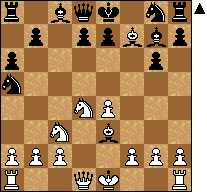
Patterns
Back in the 1960s, the psychologist and chess master Adrian de Groot famously did research on how expert chess players differ from novice and intermediate chess players in their thought processes. In the end, he found that recognizing and using patterns was one of the key differences: it was not so much that experts could calculate much faster and deeper, but that they could recognize patterns and hone in on relevant features to investigate further during a game.
Most of us who play at a chess club at all are at a high enough level that we use and recognize patterns called chess openings. Earlier this week I wrote about a particular chess opening, the Sicilian Defense.
The reason we can play entire chess games in “blitz” fashion (with under 5 minutes per game for each side, usually, but sometimes players agree to play under 10 minutes or 3 minutes or even just 1 minute, which I sometimes enjoy doing) is because we can rely a lot on pattern matching.
So in one of my 10-minute blitz games tonight, we each played the first six moves in probably no more than six seconds (counting one second to just physically move a piece from one square to another and then hit the clock), because it was just a standard Sicilian Defense variation that we both knew by heart up till that point.
When the position is new, there still may be approximate pattern matches
Very quickly in chess, the position becomes new, something that one has not seen before in the previous couple of thousand games of chess in one’s life. This is what makes chess so fascinating: it is just not possible to memorize all the possible positions in chess. Even if you have played millions of games of chess, the very next game you will probably encounter a position different from anything you have seen before.
In the blitz game, novelty began at move six, when my opponent played a non-standard move. This made me pause for just about one second before making my next move (instead of the first six moves during which I did no real thinking at all). Did I do some kind of big calculation? No: from general principles and an approximate matching with the dozens of similar positions I have seen before, combined with “theoretical principles” suggesting that the move was inaccurate, I simply continued with a reasonable reply. In a slower game, I might have taken more time to figure out what a “best” reply would be, but when time is short, “good” is good enough.
Meanwhile, even at move six, my pattern recognition was already kicking in. I was immediately recognizing the similarity to a game that I played 27 years ago, in 1985. Yes, we chess players who intensely love the game actually do remember elements of many of the games we have ever played in our lives; and those of who remember the most play the best. By coincidence, I was remembering a game that just three months ago I wrote about, a game of mine that was published in Michigan Chess after it was played.
Comparison
Compare the following positions, which occurred after I played my Bishop to c4, and Black is to move.
The first is from 1985:
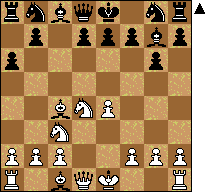
The second is from tonight:
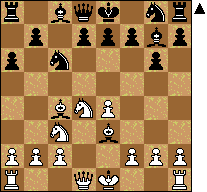
The similarities are obvious: both are positions out of the Accelerated Dragon of the Sicilian, and Black is behind on King-side development, and has played an early a6.
The differences involve Black’s Knight on c6 and White’s Bishop on e3.
The critical position
It turned out that my blitz opponent fell into a trap that I have never seen before in its exact form, but it was so close to similar traps that I could easily focus on seeing whether the similarities justified a similar continuation on my part.
The critical position has White to move and win.
The first is from 1985:
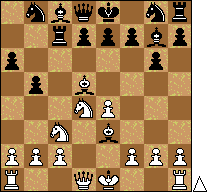
The second is from tonight:
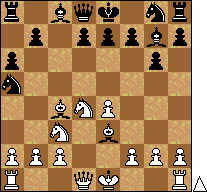
In both positions, the winning move is Bxf7+ followed by Ne6.
In 1985, I had actually thought for about half an hour to verify that this truly wins. Tonight, I thought for about ten seconds to prove in my head that it wins, and then I played the move, after which my opponent also thought for about ten seconds and then resigned.
The point of pattern matching
The point is the pattern matching does not automatically give you the answer, but gives you a possible head start in the search for finding an answer: it gives you a goal to aim for, and in many cases substitutes verification for search. Search is hard. Verification is often easy. For example, if you had to guess someone’s password by just brute force going through the alphabet, it would take forever. But if you knew up front that very likely this person will use certain words or numbers, then you can just try out various combinations of those and maybe get the answer without searching through every legal possibility. The same happens in chess, music, tennis, programming, cooking, flying, and everything else: having seen and personally experienced many patterns and their possible solutions makes it easier to solve new problems.
There is a caveat I would like to explore in future writing: the danger of misleading patterns. We humans love to find patterns and often rely on patterns when they are actually completely misleading. Failure in chess and other human activities often comes from relying too much on analogies from patterns.
The annotated game
Enjoy playing over the complete game with my annotations, including diagrams!
Also, I have to repeat what I said in my earlier post about this pattern: it is not original; I first saw it in a Bobby Fischer game that I saw and studied in around 1978.
Conclusion
Pattern matching, both looking to create good patterns and looking to avoid falling into bad ones, is key in developing expertise in chess. Although most games I play have their own unique novel character, sometimes I play a game in which some key pattern is all there is to the game.
